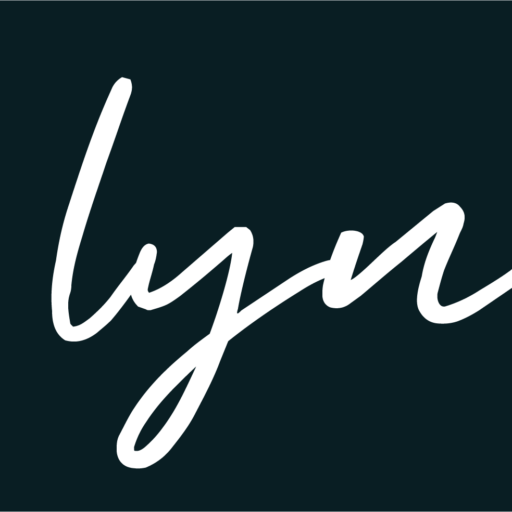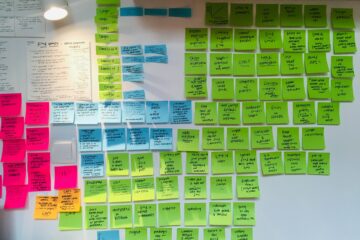Behind every great marketing campaign and brand persona is likely a team that participated in a brand workshop. Branding workshops are essential for companies to develop brand strategies and visual identities effectively. They reveal important considerations of a brand, determine goals and craft careful plans to reach them.
What Is a Brand Workshop?
A brand workshop can be a meeting between a brand designer and their client. During this session, the designer will lead the client in conversation and through exercises to reveal critical details about the brand, such as its ideal customer, offerings, and brand vision.
Brand workshops go by a variety of names, including brand strategy sessions, discovery sessions, or strategy workshops. However, they all share the same goal: kick off the brand-building process by gaining a deep understanding of the client and their company.

Importance of Branding Workshops
Branding workshops are important at any stage in business development. Whether you have just created your company or found your existing one in need of a rebrand, a brand workshop is a great tool for success.
Participating in a brand workshop allows a client to develop a brand strategy unique to them. Their specific needs, challenges, and weaknesses can be addressed to ensure the brand designer and client are on the same page.
The designer and client help one another in a brand strategy workshop. The designer gets a feel for the brand vision, target audience, and business goals straight from the client themselves. Meanwhile, a client gains an understanding of where their brand stands in the competitive landscape and guidance on strategic or visual direction from an expert.
In-Person vs. Virtual Brand Workshops
The need for social distancing amid the pandemic has brought about the prominence of virtual brand workshops, in addition to the traditional in-person format. Although many people prefer face-to-face communication, there are benefits to running a workshop virtually.
There are many digital advantages to virtual sessions, such as endless space for taking notes, easily organizing a canvas, creating collages for visual thinking, and recording the session to discover anything you may have missed.
Virtual workshops also open the door to working with agencies and companies that may not be close to you geographically.
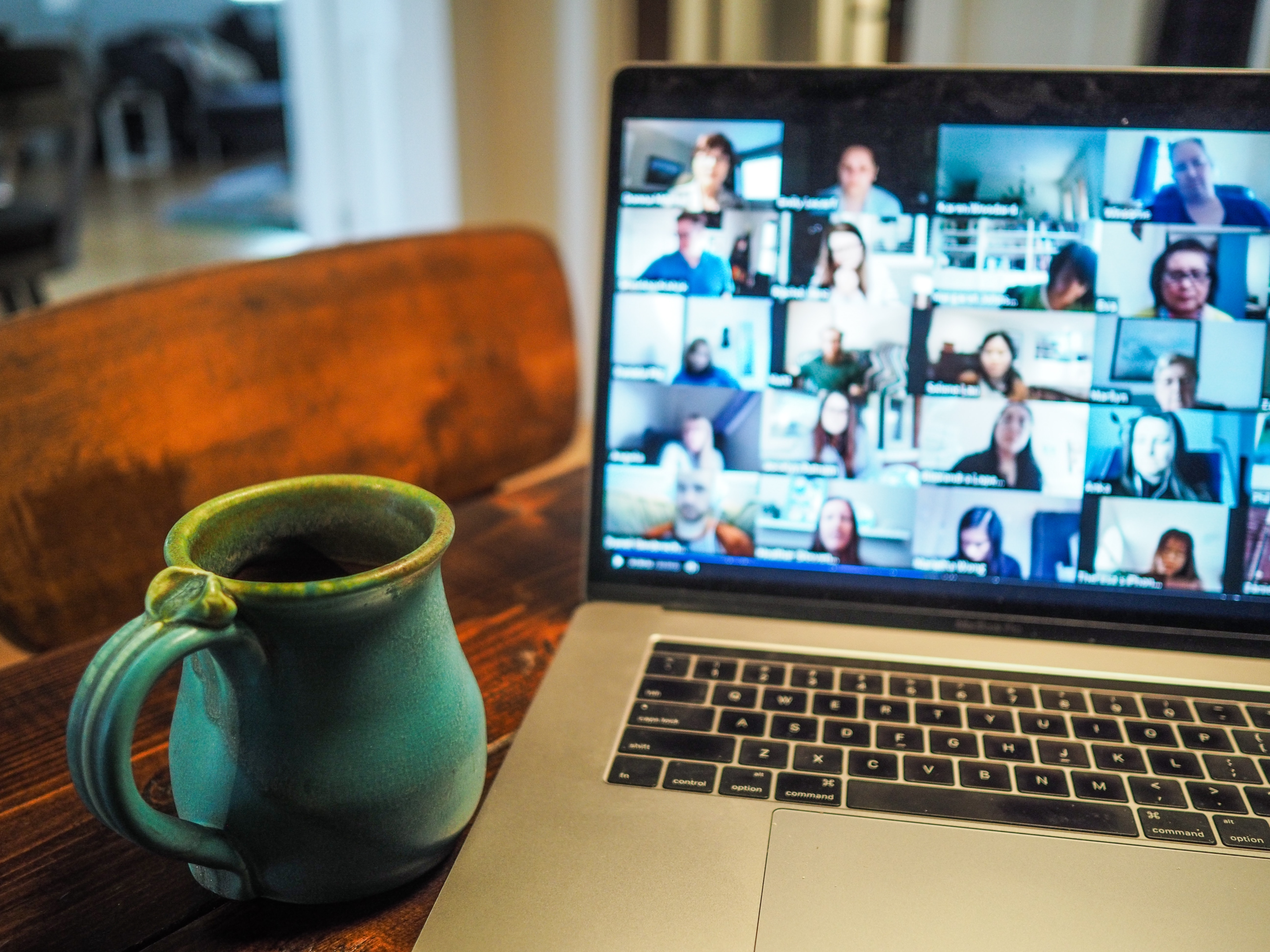
Running an Internal Branding Workshop
Although collaborating with a vendor is a wonderful investment, it isn’t always a viable, in-budget option for start-ups. The good news is that your company can run a brand workshop all on its own!
Here are some important steps to incorporate into your internal branding workshop:
1. Pre-workshop: Identify Your Timeline
Before the workshop begins, discuss factors that will affect how long the workshop will run.
- Client size and budget: Workshops may run longer if you are working with a large client with a big budget. However, if the client is smaller with a lower budget, you’ll want to plan the workshop accordingly.
- Project scope: Large projects inevitably take more detail and planning. Allot more meeting time for a more elaborate project.
- The brand specialists: Consult your brand specialists on their processes and how much time they typically devote to projects of similar scope and size. The time a specialist needs will vary based on their position and personal process.
- Workshop agenda: You’ll want to create the foundation of the workshop and what is to occur within it. This agenda will also play a role in the length of the workshop. The more things to get to, the more time you need!
2. Establish Goals and Objectives
Every brand strategy workshop needs clearly defined goals and objectives. These keep everyone on the same page and working towards the same end.
To establish them, ask yourself what the values, purpose, and mission of the brand are. Why was the brand started? What is important to it? What does it hope to accomplish? All of these factors are crucial to brand identity and the marketing strategies you choose to employ.
When creating a goal, assess where the brand currently stands and the direction you want it to go. For example, you may be looking to expand your target audience to include not only teenage girls but women in their twenties as well.
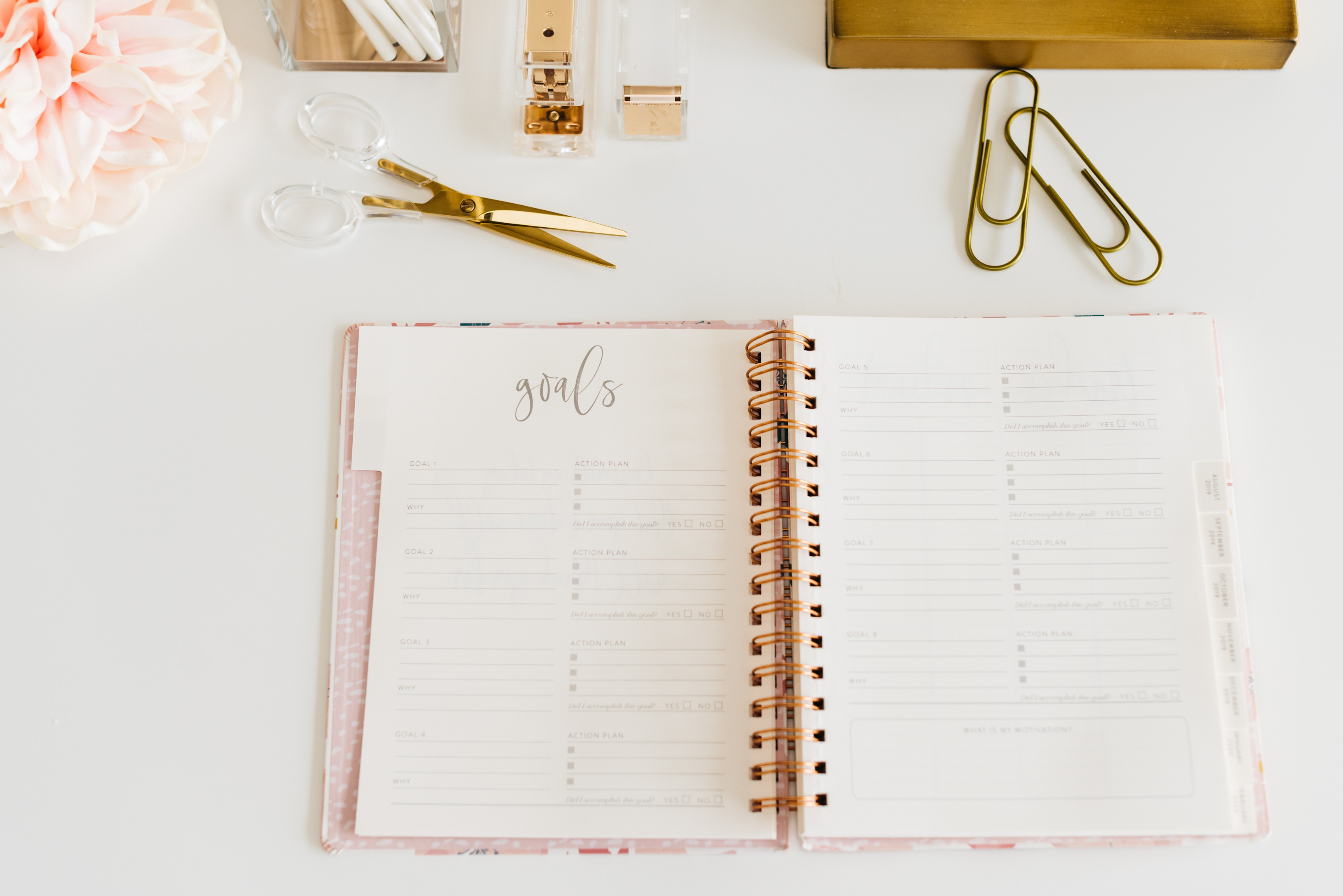
3. Research and Gather Information
Research is your greatest tool for brand strategy workshops. Understanding the climate of the market your brand is entering is essential to building a brand or developing a strategic direction.
Understanding your audience and ideal customer is crucial. The demographics and psychographics of your target audience will allow you to understand what they may be drawn to or averted by within your branding.
It may also be helpful to understand the archetype framework of your brand. A brand archetype is a construct that all humans identify with or relate to, even unconsciously.
There are believed to be 12 various archetypes present in our psyches, such as The Lover, The Rebel, or The Caregiver. They can also be referred to as various personality types, and brands can use them to best serve their audiences authentically.
It is not enough to understand your own brand. You must also dive into your competitors and get an idea of what you are up against. Who are your competitors marketing to and how are they doing it? How can your branding stand apart from theirs? How can your brand better serve your consumers?

4. Develop a Positioning Strategy
Next, you will want to develop a positioning strategy for the brand. This is a marketing plan that determines where the business stands in the market and how it can be positioned to attract more customers. The key to optimal positioning is distinguishing your brand from similar ones.
Try to identify and establish the brand’s defining characteristic. This is what will influence a consumer and determine how they perceive your brand in comparison to your competitors.
Effective strategies will consider customer needs, competitor claims, and the strengths and weaknesses of the brand.
5. Develop the Brand’s Personality
Brand personality is essential to brand identity and asserting your place in the market. A brand’s values and target customers can be revealed through the brand persona and conduct.
Here are some key aspects of developing a brand personality:
- Language: Brand voice is an important component of its personality. Define key phrases and wording that align with the brand’s offerings, values, and mission and use them consistently. Also, land on a definitive tone of voice to set the tone of the brand.
- Message: Now that you have a brand voice, it needs something to say. The message of your brand should be unique, reflective of your values, and aim to connect with the target audience. Good brand messaging is impactful but concise and memorable, such as Walmart’s “Save money. Live better.”
- Branding Story: Your branding story is your chance to ignite an emotional reaction from your audience. Decide what it is that your brand adds to someone’s life, such as the physical benefits and the emotional ones, and share that narrative.
Discuss the Visual Brand
A brand’s visual identity is just as important as its general brand identity. Visual branding includes your logo, imagery, typography, colors, and creative designs.
It is vital to select fonts and color schemes that best communicate your brand persona and draw in the appropriate audiences.
Let the research you conducted guide you in these selections and make use of the feelings and associations various visual elements possess.
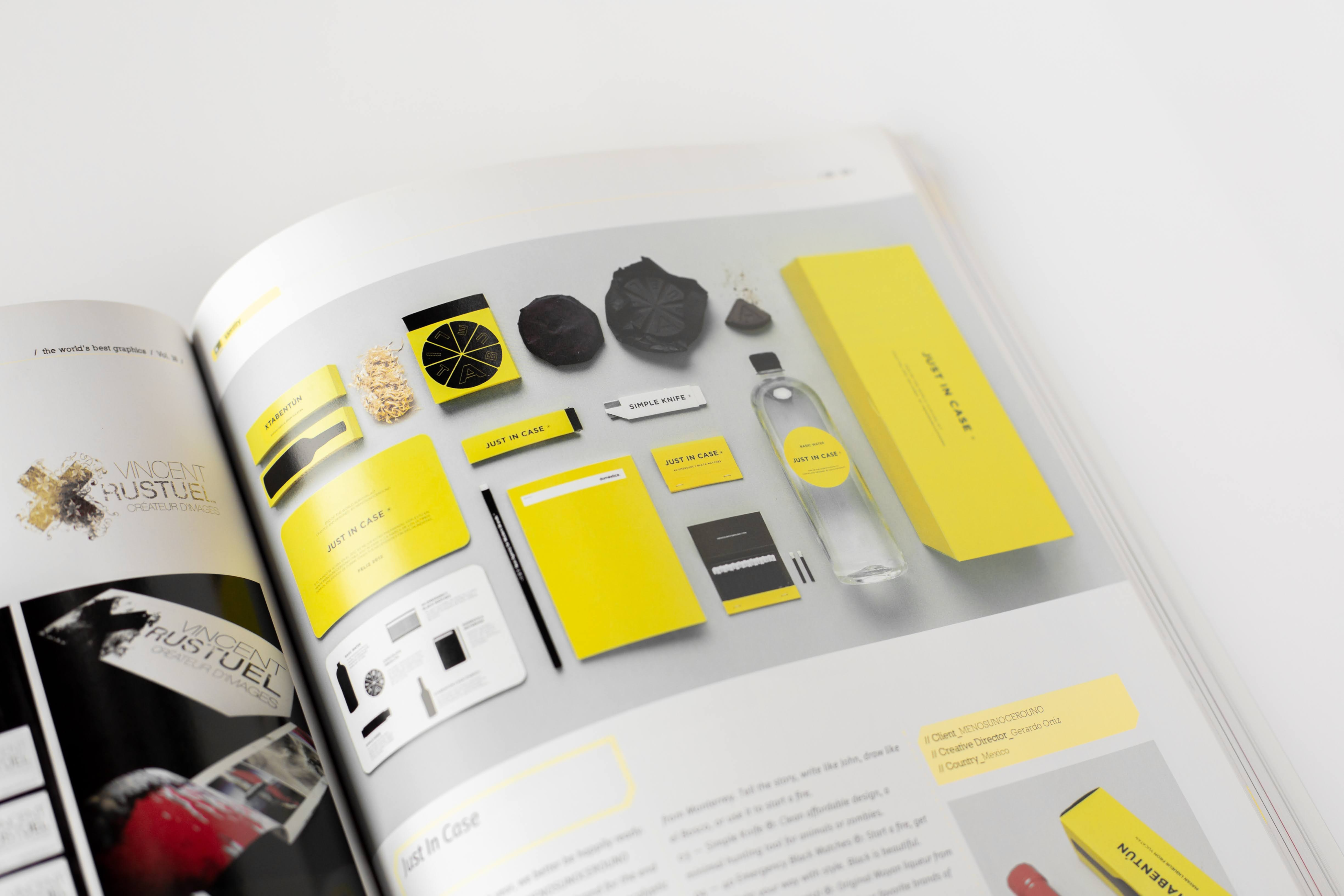
7. Plan Marketing Execution
Once the brand strategy has been defined, also make use of your time in a branding workshop to plan how the strategy will be executed.
Ask questions such as: when will the new brand identity launch? Which team members will be assigned to which tasks? Which social media channels will be utilized and when?
8. Post Strategy
At the conclusion of the workshop, your company should have gained a deep understanding of the brand, the direction it is heading and possess a logical plan to execute the branding or rebranding discussed.
Find time for another workshop if the team feels there is more to address. Details are crucial in bringing your brand vision to life!

Brand Workshop Tips
Try Branding Exercises
Exercises can add creativity and out-of-the-box thinking to your branding workshop, as well as make it more exciting and engaging.
One example is an exercise coined the “pressure cooker“. This entails presenting a problem to be solved, a target audience, and keywords for potential solutions to your group and then setting a timer for participants to come up with as many ideas as they can within the time frame.
Another branding exercise is the “brand obituary“. In this one, have your team imagine your brand as a human being and act as journalists writing an obituary for the deceased. Include the brand’s achievements, how it differed from others, and the cause of its demise. This activity can work to identify what is unique about your brand, but also any possible issues it may face long term.
Finally, your workshop may want to try another fun exercise called “wrong customer profile”. This one is just what it sounds like. Your team will work to describe the opposite of your ideal consumer, such as someone who is incredibly unlikely to be interested in your brand. By process of elimination, you may get a better feel of who you are targeting.
Ask Questions – Smart, Stupid, Silly, and Everything in Between
Don’t let branding workshops intimidate you. Come prepared to be vocal and encourage your team to do the same. Brainstorming and asking questions will keep the conversation flowing and propel the brand forward.
If you’re unsure about something – ask! If you think a consumer would have a question – ask it!
It is crucial to gain clarity in the brand vision, identity, and goals. Oftentimes, questions (even silly ones) are great jumping-off points for further discussion.

Benefits of a Branding Workshop
There are many benefits to conducting a branding workshop, whether it’s on your own or with the help of a brand strategist.
First, it provides a time and place for the entire team to collaborate, and for all voices and perspectives to be heard. It also ensures that all involved in the branding process are on the same page about decisions and next steps.
Another benefit is the opportunity to determine what the brand’s internal vocabulary and phraseology will be. Adjectives that describe your brand’s attributes will reveal themselves as you communicate and will be great to incorporate into your brand voice and language.
FAQs
What Is the Role of the Workshop Facilitator?
A workshop facilitator will get to know the participants, set expectations, and clarify what the workshop will cover. They may handle travel and technology issues in advance to ensure no workshopping time is wasted on waiting around. Facilitators will also map out an agenda, including a break for coffee or snacks if a session will be lengthy.
How Long Do Branding Workshops Usually Take?
The length of the workshop depends on the factors discussed above such as client budget, project scope, brand specialists, and the agenda itself. They can take from 2-6 hours, and it is often recommended that the team take a work day to complete a workshop.
Breaks are recommended for coffee, snacks, and lunches to ensure active participation and engagement.
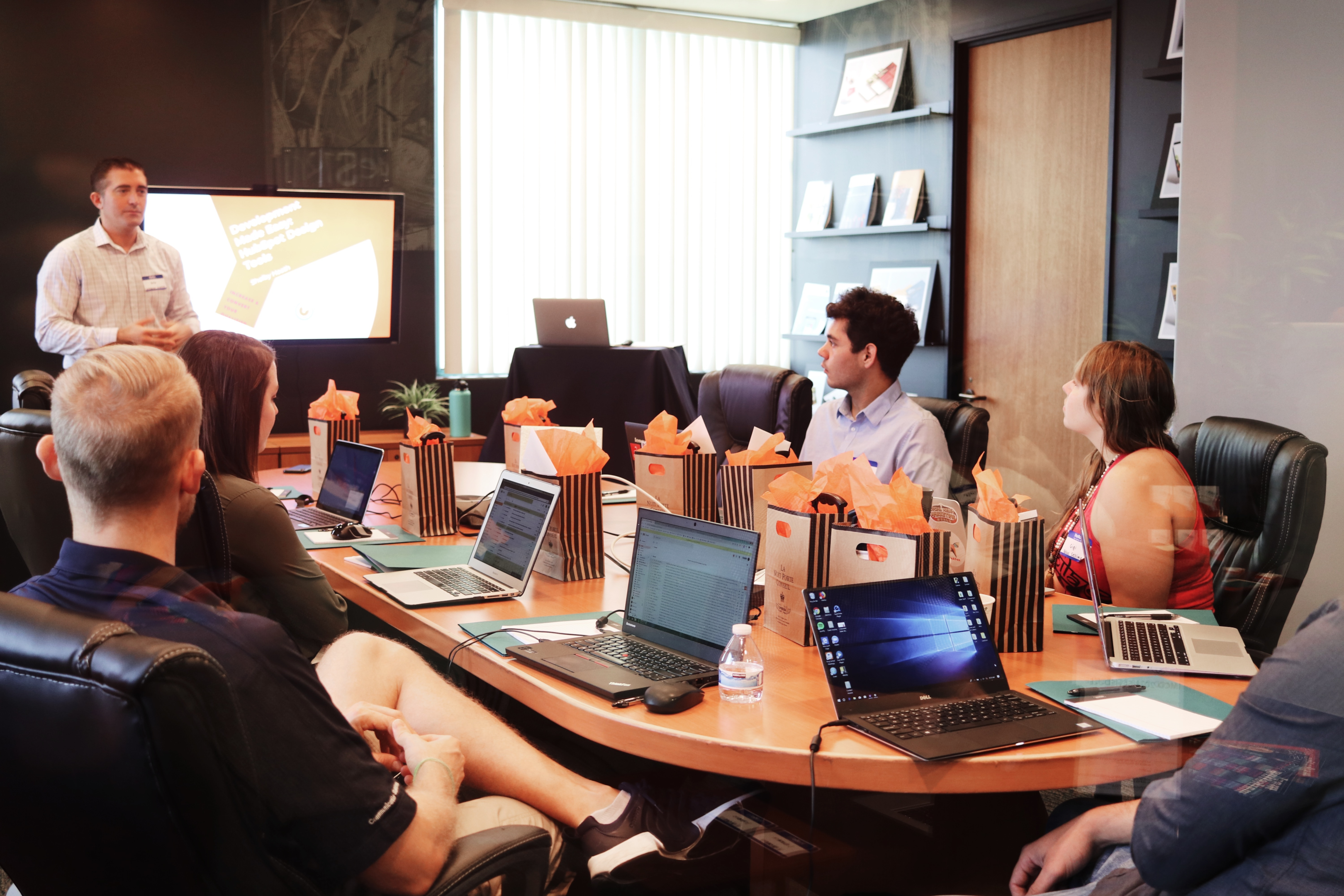
Brand Workshop – The Bottom Line
Whether you conduct a branding workshop in-person or virtually, with an expert, or internally with your team, it will give your brand a leg up on the market.
Make use of a workshop facilitator, engaging exercises, and the opportunity to hear everyone’s thoughts and opinions to develop the perfect brand strategy for success.
Looking for a brand strategy expert to lead your team through a brand workshop? Contact us to learn more about the process and discuss how we can take your brand to the next level.
